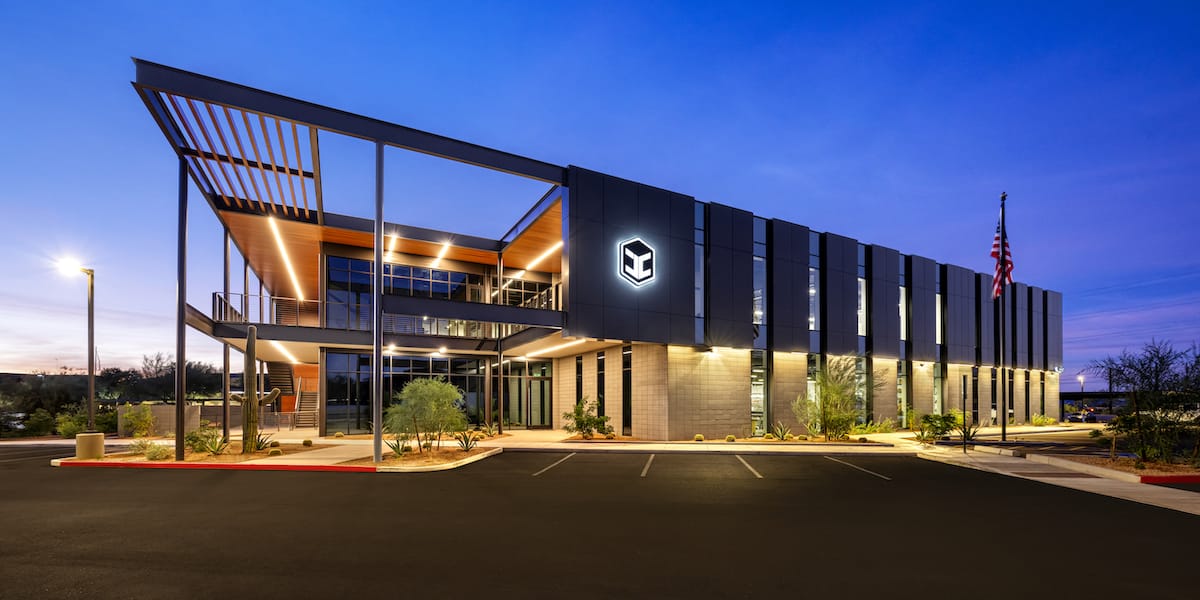Despite national declines, Phoenix stands at the forefront of industrial space occupancy and demand, with a 3% increase in occupied space and the delivery of 16.5 million square feet of industrial product in Q3 2023, as highlighted in LGE Design Build’s newly released Q4/Q1 Construction Delivery Outlook report.
READ MORE: AZ Big 100: 50 real estate companies to watch in 2024
“Our report dives into the intricate factors that impact construction labor, supply chain dynamics, material volatility and demand to provide valuable insights to help industry leaders make informed decisions as we continue to move into the new year,” said Blake Wells, vice president of preconstruction at LGE Design Build. “We’re optimistic about the future in this market. Phoenix’s metro area is becoming a hub for tech giants due to its lack of natural disaster risks, stable climate, low utility costs, business-friendly environment and regulatory measures.”
In addition to industrial space occupancy, a summary of the report’s other key findings include:
Construction Labor
Arizona’s construction workforce is expanding alongside the state’s economic growth, with a surge in construction projects. Other notables:
- There were over 900 construction jobs added in the Phoenix metro area in November 2023 for a total of 161,400, according to the Arizona Office of Economic Opportunity.
- The state of Arizona has fostered partnerships, training programs and initiatives like the Voluntary Protection Program to enhance workplace safety, apprenticeship opportunities and overall workforce development, contributing to the state’s robust construction talent pipeline.
- In November 2023, job growth in the U.S. increased, but the unemployment rate rose to 3.8%, marking the highest level since February 2022, before the Federal Reserve began raising rates. This is up from 3.5% in July, and wage gains slowed down, indicating a softening of labor market conditions. This reinforces the belief that the Federal Reserve is unlikely to raise interest rates soon, as the labor market is slowing down in response to the central bank’s efforts to cool down economic demand through substantial rate hikes.
Material Costs
Material price increases in the construction industry are stabilizing at historic levels of 3% to 5%, but electrical gear and HVAC equipment face ongoing price increases due to high demand and limited manufacturing capacity. The shift away from Asian suppliers towards more dependable sources is a noteworthy trend. Other notables:
- Regional cost pressures are evident in raw, heavy materials like concrete, gypsum and asphalt, with transportation costs influencing higher prices in specific regions.
- In the fourth quarter of 2023, construction costs were highest in the familiar states of Alaska, Hawaii, California and the Northeast, compared to the national average.
- Material costs exhibit a clear pattern, with higher prices observed the farther one is from the Mississippi River and major manufacturing centers in the central U.S. Installation costs follow a similar delineation, with the Southeast and Mountain States maintaining lower labor costs, while the Midwest, West Coast, Northeast and overseas locations continue to experience higher costs.
Supply Chain
Suppliers expressed optimism about stabilizing prices and improved lead times during the closing of 2023, but certain products such as generators, switchgears, transformers and miscellaneous mechanical equipment may face continued challenges. Other notables:
- Trucking freight has experienced a surge in overall demand with the American Trucking Associations’ For-Hire Truck Tonnage Index indicating a 1.3% increase. Future increases are projected and could potentially cause price hikes.
- Despite a decrease in supply chain disruptions, shortages of skilled professionals in the supply chain persist according to supply executives, requiring a combined effort of people and technology to rebuild and strengthen the supply chains.
- Procurement pain points continue to be HVAC units, electrical components and drywells.
Demand by Product Type
While Phoenix stands out as an exceptional leader in industrial space occupancy, the Valley’s office real estate outlook is cautious due to potential negative impacts from factors such as a further national economic slowdown, ongoing inflation and elevated interest rates. Other notables:
- Despite challenges in Phoenix office real estate, positive indicators include ongoing demand for well-equipped office spaces, along with newer Class-A and trophy buildings, to aid in the return-to-work efforts by many companies.
- While interest from smaller tenants may mitigate unstable vacancy rates, the moderate pace of new office construction is expected to limit immediate supply-side risks. However, larger entities may explore cost-cutting measures, such as reducing office footprints if national economic conditions worsen. A full recovery to pre-pandemic levels is anticipated to take time.
To view the full Construction Delivery Outlook report, click here. For more, visit LGEDesignBuild.com.




